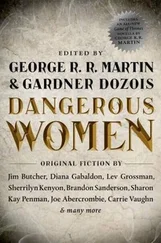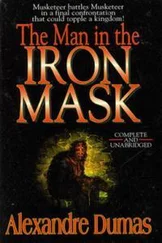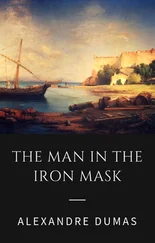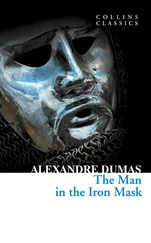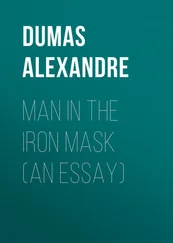George Dover - The True History of the State Prisoner, commonly called the Iron Mask
Здесь есть возможность читать онлайн «George Dover - The True History of the State Prisoner, commonly called the Iron Mask» — ознакомительный отрывок электронной книги совершенно бесплатно, а после прочтения отрывка купить полную версию. В некоторых случаях можно слушать аудио, скачать через торрент в формате fb2 и присутствует краткое содержание. Жанр: foreign_antique, foreign_prose, на английском языке. Описание произведения, (предисловие) а так же отзывы посетителей доступны на портале библиотеки ЛибКат.
- Название:The True History of the State Prisoner, commonly called the Iron Mask
- Автор:
- Жанр:
- Год:неизвестен
- ISBN:нет данных
- Рейтинг книги:5 / 5. Голосов: 1
-
Избранное:Добавить в избранное
- Отзывы:
-
Ваша оценка:
- 100
- 1
- 2
- 3
- 4
- 5
The True History of the State Prisoner, commonly called the Iron Mask: краткое содержание, описание и аннотация
Предлагаем к чтению аннотацию, описание, краткое содержание или предисловие (зависит от того, что написал сам автор книги «The True History of the State Prisoner, commonly called the Iron Mask»). Если вы не нашли необходимую информацию о книге — напишите в комментариях, мы постараемся отыскать её.
The True History of the State Prisoner, commonly called the Iron Mask — читать онлайн ознакомительный отрывок
Ниже представлен текст книги, разбитый по страницам. Система сохранения места последней прочитанной страницы, позволяет с удобством читать онлайн бесплатно книгу «The True History of the State Prisoner, commonly called the Iron Mask», без необходимости каждый раз заново искать на чём Вы остановились. Поставьте закладку, и сможете в любой момент перейти на страницу, на которой закончили чтение.
Интервал:
Закладка:
9
Isabella Clara, of Austria, daughter of the Archduke Leopold, who was grandson of the Emperor Ferdinand III. Married June 13th, 1649, to Charles III., Duke of Mantua.
10
Appendix, No. 1.
11
Appendix, No. 1.
12
The Empress Eleanor was daughter of Charles, Duke of Rhetelois, who died in the life-time of his father, Charles I. Duke of Mantua, in spite of which he is generally denominated by historians, Charles II., Duke of Mantua. She became, on the 30th of April, 1651, the third wife of Ferdinand III., Emperor of Germany, whom she survived many years, and died December 5th, 1686. She was the aunt of Ferdinand Charles IV., Duke of Mantua.
13
Thomas de la Cerda, Marquis of Laguna, in Spain, married April 22, 1672, to Maria Louisa, only daughter of Vespasian Gonzaga, only brother of Ferdinand III., the reigning Duke of Guastalla.
14
The Monk Bulgarini appears to have been the confessor and favourite of the Duchess-mother of Mantua; and to have been entirely devoted to the Spanish interests.
15
The profession of Giuliani was, that of an editor of newspapers, in which capacity he was in the habit of travelling from town to town, to collect and convey news. See Appendix, No. 98.
16
Alphonso IV., Duke of Modena, succeeded his father Francis I. in his territories, and in the command in chief of the French army in Italy, in 1658. Died in the 29th year of his age, July 16, 1662, having married, May 27, 1655, Laura Martinozzi, niece of Cardinal Mazarin.
17
Charles III., Duke of Mantua, father of Ferdinand Charles IV., the reigning Duke, had the command of the Imperial Army in Italy, and took upon himself the office of Vicar General of the Empire in Italy, during the interregnum which followed the death of the Emperor Ferdinand III. in 1657, in virtue of a diploma, lately granted to him by that Prince. His right was contested by the Duke of Savoy, who, upon the ground of old usage, claimed the office for himself. The Electors of the Empire annulled the appointment of the Duke of Mantua.
18
Appendix, No. 1.
19
Appendix, No. 1.
20
Appendix, No. 1.
21
Cæsar Bishop of Laon and Cardinal d’Estrées, son of the first Marshal of France of that name, was employed in various negociations with the Princes of Italy; but is now more remembered for his courtier-like reply to Lewis XIV. That Monarch one day at dinner complained of having lost all his teeth. “And who is there, Sire, that has any teeth?” said the Cardinal (Sire, et qui est-ce qui a des dents?) What made the flattery the more ludicrously gross was, that the Cardinal, though an old man, had remarkably fine teeth, and showed them very much whenever he opened his mouth.
22
Appendix, No. 2.
23
Appendix, No. 8.
24
1677.
25
Simon Arnaud de Pomponne, Secretary of State for Foreign Affairs from 1671 to 1679, when he was dismissed from his office, but retained the title of Minister of State, with permission to attend the Council. A man, like so many of his race, who united considerable talents to great excellence of character. Madame de Sévigné says, in speaking of the eminent station he had filled, that “Fortune had wished to make use of his virtues for the happiness of others.”
26
Ferdinand III., Duke of Guastalla, descended from a younger branch of the House of Gonzaga; and the heir to the Duchy of Mantua, if he survived Ferdinand Charles; which however was not the case. He died of dropsy, January 11th, 1678.
27
Anne Isabella, eldest daughter of Ferdinand III., Duke of Guastalla, married August 13th, 1671, to Ferdinand Charles IV., Duke of Mantua, by whom she had no offspring.
28
This is evidently a mistake, and should be read niece instead of second daughter . It alludes to Maria Louisa, only daughter of Vespasian Gonzaga, only brother of Ferdinand III., Duke of Guastalla, married to a Spanish nobleman, Thomas de la Cerda, Marquis of Laguna. At this time neither of the daughters of Ferdinand had children, and she , consequently, after them, was the heiress of their claims upon the Duchies of Guastalla and Mantua. The second daughter of Ferdinand III., Maria Victoria, married June 30th, 1769, Vincent Gonzaga Count of St. Paul – the person who is here erroneously described as having been the means of marrying her to another person.
29
Vincent Gonzaga, Count of St. Paul, afterwards Duke of Guastalla, was descended from a younger son of Ferrant II., first Duke of Guastalla. After contesting for many years his right to that Duchy with Ferdinand Charles IV., Duke of Mantua; during which they were both merely made use of, by turns, as the instruments of the French and Austrian domination; he was finally successful in establishing himself at Guastalla in 1706, where he died April 28th, 1714. By his wife, Maria Victoria, second daughter of Ferdinand III., Duke of Guastalla, he left two sons, who successively succeeded him in the sovereignty of that Duchy.
30
Appendix, No. 9.
31
Appendix, No. 10.
32
Appendix, No. 17.
33
Appendix, No. 18.
34
Appendix, Nos. 24, 28, 29, 31, 33, 34, 35, 36, 39, 40.
35
Appendix, No. 47.
36
Delort, quoting from an Italian manuscript, in the records of the office of the French Secretary of State for Foreign Affairs, which appears to have been written by Giuliani.
37
Delort, quoting from the same authority.
38
M. Delort says the sum actually given to Matthioli, was 400 Doubles, and the sum promised him 400,000 Doubles, which, from its largeness, he conceives must be a mistake; but he adds that it is so written in the Italian manuscripts before referred to.
39
Delort.
40
Francis Michael Le Tellier, Marquis de Louvois, son of the Chancellor Le Tellier, Secretary of State for the War department, from 1666, to the time of his death, in 1691, which occurring suddenly, and just as he was on the point of being disgraced, gave occasion to a report that he was poisoned: for which, however, it appears there was no foundation. He was of a haughty and cruel disposition, and was the minister who planned and ordered the inhuman ravages of the Palatinate, which have so indelibly disgraced the reign of his master.
41
Delort.
42
Lewis Francis, Marquis and afterwards Duc de Boufflers, Marshal of France in 1693. Died in 1711. One of the best of Lewis the Fourteenth’s generals.
43
Nicholas de Catinat, Marshal of France in 1698. “He united,” says Voltaire, “philosophy to great military talents. The last day he commanded in Italy, he gave for the watch-word, ‘Paris and St. Gratien,’ the name of his country house. He died there in the retirement of a real sage, (having refused the blue ribbon) in 1712.”
44
Upon reference to the Mémoires de Catinat, published in 1819, this event is found to be thus adverted to: – “In 1679, Catinat was charged with some negociations with the Duke of Mantua; but the affair failed of success, in consequence of the treachery of the Secretary of that prince. Catinat, according to the King’s orders, was anxious to punish the traitor. He remained at Pignerol some days, and having engaged him in a hunting party, had him arrested.” It also appears from these Memoirs, that both Catinat and Boufflers were again despatched to Italy on the same errand, in 1681, when Casale was really given up to Lewis; and on this occasion, Louvois, in his instruction to Boufflers, mentions Matthioli by name, as the person whose treachery had prevented the success of the former negociation.
Читать дальшеИнтервал:
Закладка:
Похожие книги на «The True History of the State Prisoner, commonly called the Iron Mask»
Представляем Вашему вниманию похожие книги на «The True History of the State Prisoner, commonly called the Iron Mask» списком для выбора. Мы отобрали схожую по названию и смыслу литературу в надежде предоставить читателям больше вариантов отыскать новые, интересные, ещё непрочитанные произведения.
Обсуждение, отзывы о книге «The True History of the State Prisoner, commonly called the Iron Mask» и просто собственные мнения читателей. Оставьте ваши комментарии, напишите, что Вы думаете о произведении, его смысле или главных героях. Укажите что конкретно понравилось, а что нет, и почему Вы так считаете.


